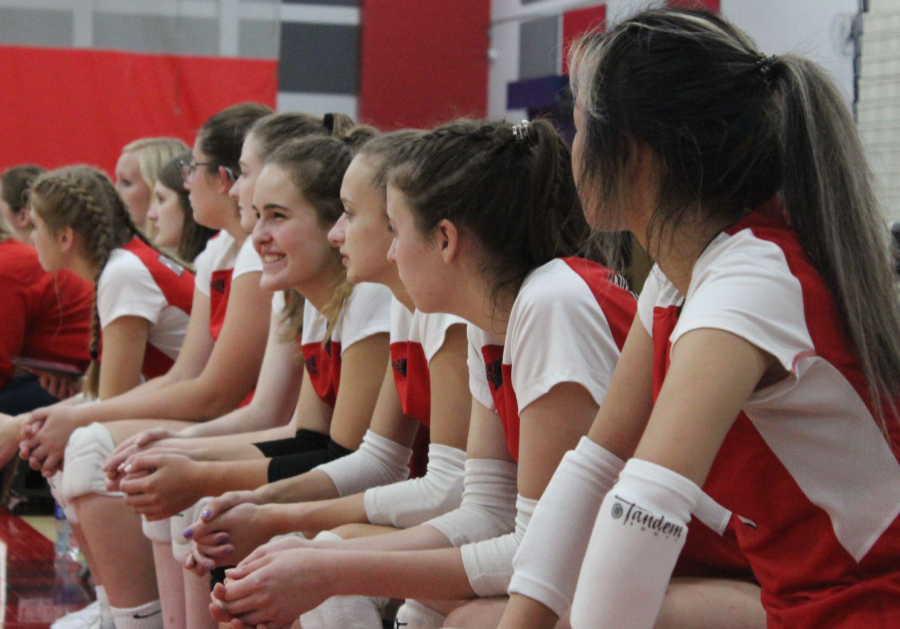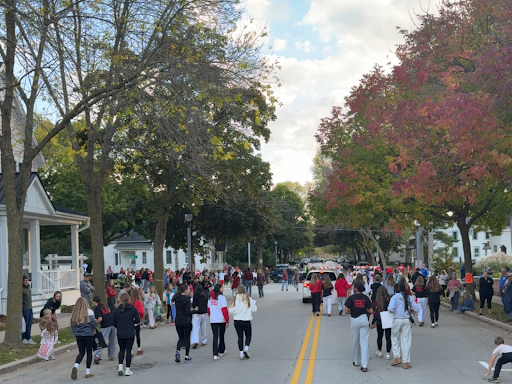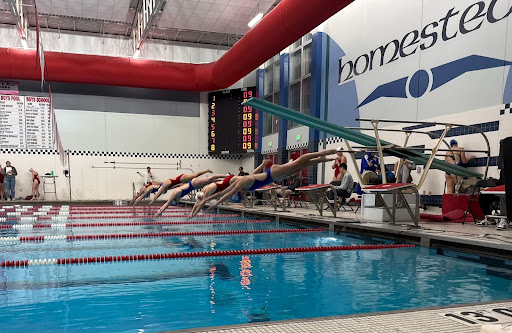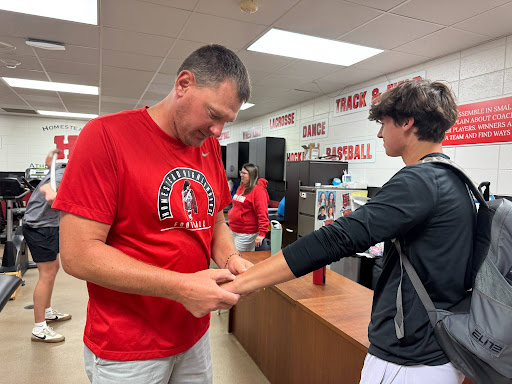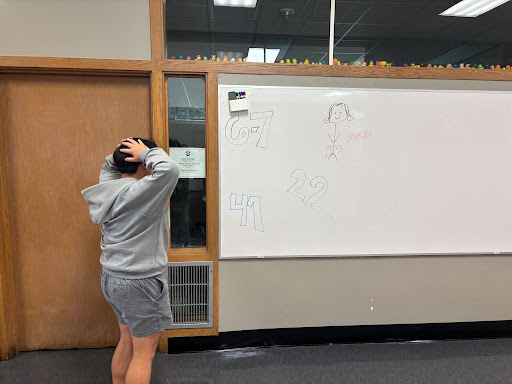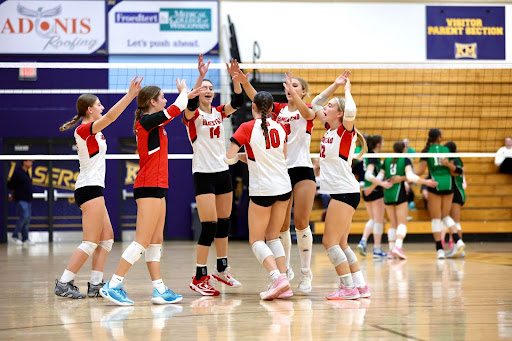Explaining the effect of extracurriculars on teens
The Homestead girls volleyball bench cheers on teammates during a game.
To play or not to play, that is the question. For many Homestead students, this inquiry is an
important part of the high school experience.
“Should I play soccer, or join the dance team?”
“How will I balance AP Calc and football?”
Extracurriculars can be beneficial to kids in many ways, including academics, physical health and mental health, but balancing schedules is a very common issue among teenagers.
Kids can find themselves torn between the activities they love and maintaining grades and personal time.
A 2020 study by the University of British Columbia showed that clubs and sports have a positive impact on mental and physical health, due to the social nature of many activities, and the opportunity to develop interests.
The same study found that participation in extracurriculars was associated with higher levels of life satisfaction and optimism, along with lower levels of anxiety and depressive symptoms.
Extracurriculars can also positively affect students’ academics, as conveyed in a 2017 study by National Louis University, where a positive correlation was found between extracurricular participation and higher GPA, and ACT scores.
The positive effects, however, can be diluted when teens spend too much time on extracurricular activities.
When students do not have time for themselves, they can lose motivation and become stressed more easily.
In a 2018 study by Najum Tariq of National University of Science and Technology, it was said that, “Over-scheduling in excessive activities can decrease the benefits of participation in extracurricular activities. Students can become tired and lazy and thus become less interested in participation. Students may also try to go beyond their limits to show extra performance resulting in some serious injuries.”
It can also be hard for teens to balance extracurriculars and academics when kids don’t leave enough time left for school work.
Mary Beth Sesselmann, school psychologist, said that, “if you’re not leaving enough time for homework or things like that, you can get stressed and overwhelmed by the workload.”
The beneficial effects of extracurricular activities can lead to many positive outcomes for teens involved. It can be easier for kids to make friends and meet new people if they are part of a club or sport. Social skills can be boosted by the positive team environment.
”If kids are a part of a team that’s often really positive for their social relationships. Also just like
the group environment and learning how to be a good teammate can be really helpful,” Sesselmann said.
As seen in the study above, extracurricular activities can boost mental health. Kids are given a positive way to interact with their peers, along with an opportunity to stay physically active, which is a key factor in mental health.
Kelly Appleby, physical education teacher, said that, “physical activity prevents some health issues, boosts energy, promotes better sleep, increases self esteem and reduces stress and anxiety.”
Sesselmann also stated that, “exercising, has really positive effects on conditions such as depression, anxiety and ADHD.”
This being said, some students have said that spending too much time involved in clubs and sports can negatively affect them. Training and practices for various teams eats away at a lot of time, time that could be used for homework and preparing for tests. This can leave some kids struggling to stay afloat in classes, even if the majority of academics are positively affected.
Sophie Rater, freshman, said, “It’s definitely really hard to balance tests and studying with all the work you have to put into sports. My academics can be negatively affected, which stresses me out.”
Negative feedback or performance in a club or sport can also leave kids feeling down. Rater said that, “if I do really badly in a meet or a game I’ll obviously be really upset about it, and that can affect me.”
With Homestead having 73 club options and 28 athletic offerings, it is very likely that most students will be a part of an extracurricular at some point in their high school career.
According to Appleby, “The recommendation is that teenagers get 60 minutes of moderate to vigorous physical activity on most days of the week,” and sports can be a good way to fill this time.
Kids who do choose to get their exercise minutes through extracurricular activities can be getting the positive physical effects, as well as developing life skills such as, “better relationships, teamwork, leadership and accountability,” Appleby said.
Lifelong friendships can also be forged through Homestead clubs and sports, according to Rater, “the bonds that I’ve formed with people on my sports teams such as soccer and swimming, and during my clubs such as forensics, are just so great. I love all the people I do my extracurriculars with.”
The key to gleaning all of these positive impacts can be summarized in one word; balance.
Students have to make sure that they put their mental health and academics first, while still leaving time for fun after school activities. Every teen is different, so a personal equilibrium must be met on a case by case basis.
Sesselmann said, “The experience depends on the person and their drive and organization.”
According to National Louis University, “Students and guardians should try to establish a balance between extracurricular activities and academics to help students increase their confidence level and self-concept, thus contributing to the goodwill of the whole community as responsible citizens.”
So when kids are making that important decision, “to play or not to play,” they should look at all sides of the matter, and choose based on what is best for them in all matters; for their health, their relationships and their academics.

Sasha Djurasovic is a senior at Homestead. She is Co-Editor in Chief of Homestead Publications. In her free time she enjoys rowing and hanging out with...

Blair Martin is currently a senior at Homestead High School. She’s beyond psyched about continuing her work in the pubs lab and using the lessons she...

